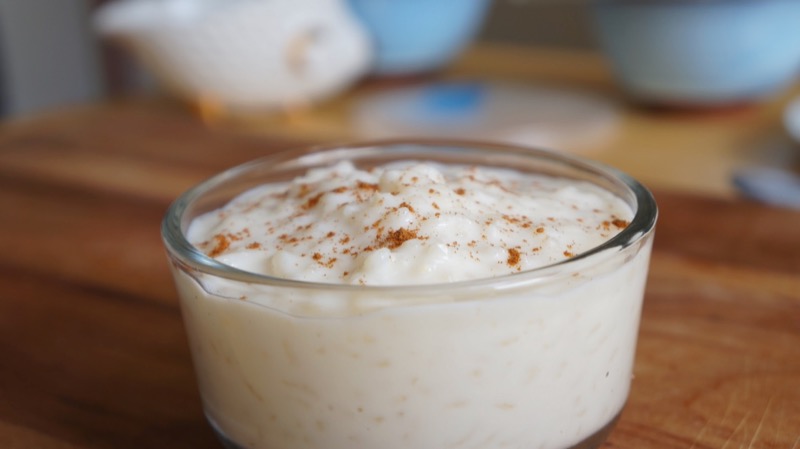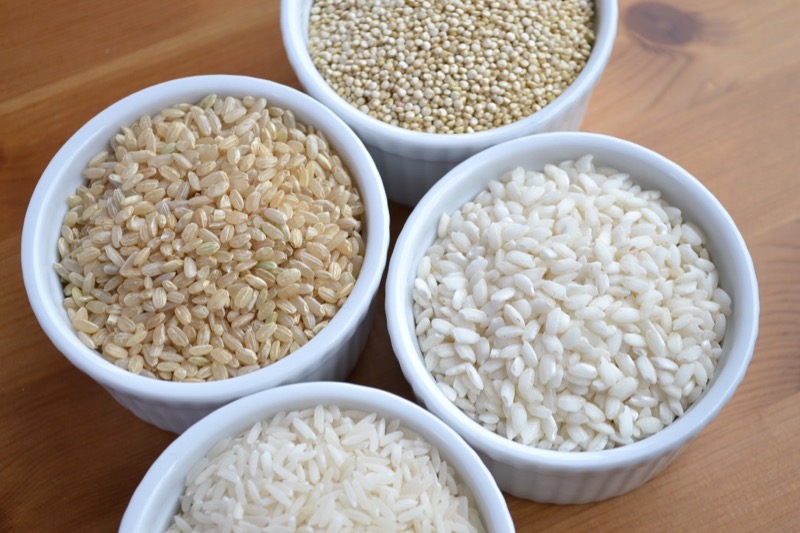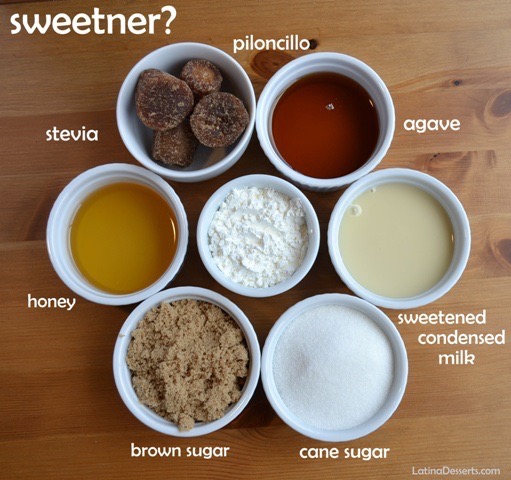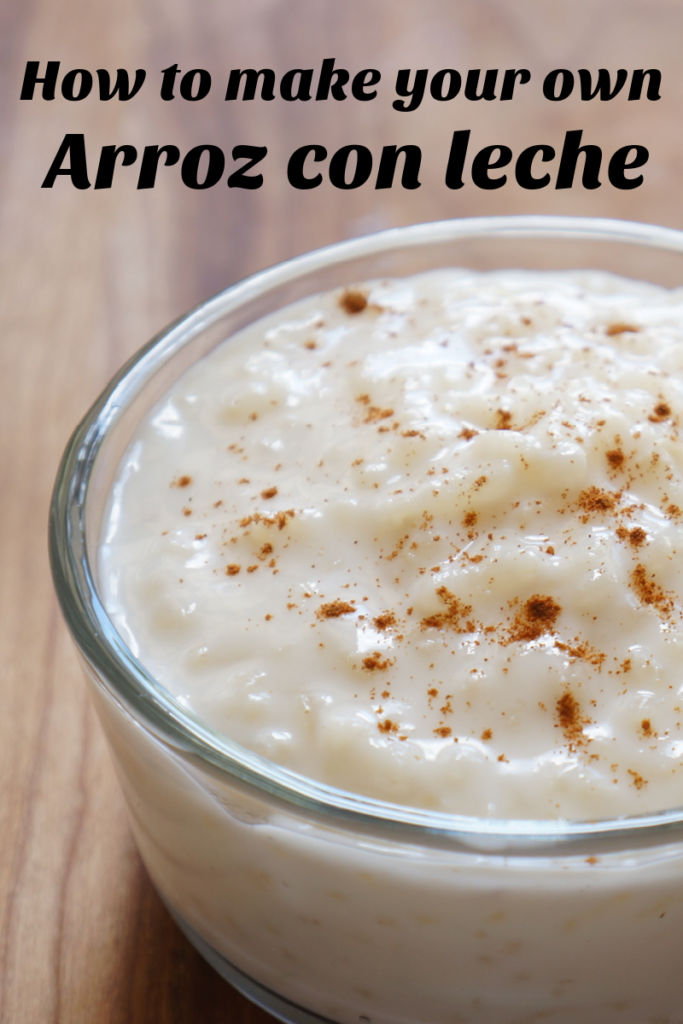How to make your own arroz con leche
Arroz con leche is rice cooked in sugar and milk or water. It is made and loved in every Latin American country, but depending on where you are, it can be served hot or cold, made with condensed milk, fresh milk, powdered milk, or water. It can have a variety of spices and be made with several types of sweeteners. You can trace the actual combination of rice, sugar, and milk, to India. But it is safe to say that Latin America is now the queen of this snack.
Clearly this is not a Pre-hispanic recipe, nothing that resembles this was consumed in the Americas before the Spanish and Portuguese arrived. The Americas had no sugar, milk, or rice. But now it dominates all Spanish and Portuguese speaking countries. In Brazil it is known as arroz doce, made with a non-starchy rice, served cold, and sprinkled with cinnamon powder. In Mexico it is made with Ceylon cinnamon, sometimes served hot, and made with a starchy rice. In Peru, I had the most amazing arroz con leche that had no milk! It was water based and had a great combination of spices and dark brown sugars. I have a recipe for that Peruvian arroz con leche here.

This is the easiest dessert you can make. My mother makes this randomly; sometimes as a meal, or snack, or dessert. She also likes to put it in bowls to let it cool and hides them in random cabinets in the kitchen. A habit I am sure arose when there were 16 people living in her house. She likes to enjoy it at room temperature, which means she had to hide it because we would eat it as soon as we knew it was done. My mothers recipe is very different than any other arroz con leche that I have tasted, it has a regional flavor, that region being the Central West Coast of Mexico, I have included her recipe here.
Anyone can make arroz con leche and you can make it your very own recipe. All you need to do is choose a starch/grain, a liquid, a sweetener, and spices (optional). Cook and eat.
Here are some guidelines.
GRAIN. The texture of your rice pudding will depend on which grain you decide to use. Brown rice gives you the most texture and some added nuttiness, while quinoa feels like a million little marbles in your mouth; fun, but not for everyone. Arborio rice will create the most luxurious, arroz con leche while long grain/short grain white rice is the classic choice. You can even do this with tapioca balls, hominy (boiled corn), or oats. Avoid basmati rice or variations because the rice will not release enough starch to make for a creamy pudding.

SPICES. Choosing a spice is easy. Think about your favorite flavors and create that blend. All spices should be used whole because this will create a bolder flavor; but if you have ground spices, these work as well. The spices will get boiled with water or milk then strained before adding the rice. You can leave the vanilla bean since it’s easy to remove but all other spices should be strained before adding the rice. After you make the recipe several times you will know how much you want to increase or decrease certain spices. I am not a fan of dried fruit in my arroz con leche, but feel free to throw some raisins, candied orange peel, candied ginger, shredded coconut, or even nuts in your rice pudding. These types of additions happen once it has finished cooking. Although, a Colombian friend once told me that adding the raisins while it boils, and removing them before eating it, adds a specific flavor to the dessert that she loves.

SWEETNERS. Regular cane sugar is good enough for all recipes but adding the different sweeteners can add some layers. Honey will add a honey flavor and agave is more forgiving and will not overpower the other flavors you are adding. You also have the option to use stevia if it’s your thing and adding the unrefined cane sugars like piloncillo, rapadura, or chancaca, add a layer of molasses . My favorite is dark brown sugar or similar to unrefined cane sugar. You have full control and I suggest you play with your options.

LIQUIDS. My favorite liquids for arroz con leche are whole milk, heavy cream and sweetened condensed milk. The combination of all these three always produces a rich luxurious dessert. But you can use just one of those alone. Then there is evaporated milk or powdered milk, also good alternatives. Some fun liquids to play with are almond milk, cashew milk, oat milk, cream of coconut, coconut milk, goat’s milk, cajeta (goat’s milk caramel), dulce de leche and media crema (half cream). And obviously you can make arroz con leche with just water. Some of the grains will release starch so it is still possible to create a creamy arroz con leche with water.
You can make your very own recipe by answering a few questions: What are your favorite spices? What consistency do you prefer? How sweet do you want it? What texture do you want?
Arroz con leche must knows:
- Stir constantly to avoid sticking, burning and spilling. The more expensive your pot the less it will stick.
- You can always substitute all or part of the milk for heavy cream … this will result in a more heavenly experience.
- Pot type and heat level will affect cook time. Low to medium heat is the safe way to go. Patience. High quality all clad pots will decrease your chances of burning it.
- The rice will soak up a lot of liquid AFTER you remove it from the heat and especially if you are going to refrigerate it to eat cold. To avoid dry arroz con leche, turn the heat off when it still has liquid left, it will be absorbed as it cools. Most of the time I add an additional cup of liquid (milk or heavy cream) once I turn it off. If it looks too wet simply heat a little bit more. You can decide your own consistency. My mom prefers dry (I can slice it into squares) and I prefer creamy like a custard.
- Sometimes wooden spoons add a wooden spoon taste to the rice; remove spoon from pot when you are not stirring or always use metal or plastic.
- Pre-soaking the rice reduces cook time which saves fuel, reduces risk of burning or spilling and decreases the stickiness of the rice. Although I wouldn’t consider reduced stickiness a positive thing. If you want to reduce cook time; soak rice for 1-2 hours then reduce liquid by 25%. Instead of using 2 cups of milk, use 1.5 or even 1. You can over cook rice; it can get mushy. A good idea is to use a thick dairy if you want to lessen cook time by soaking. Instead of using 2 cups of milk, use 1.5 cups of heavy cream. Or this would be a good place to use the media crema if you know what it is.
- 1/4 cup of uncooked rice = 1 cup of arroz con leche. This will vary depending on how much liquid you allow the rice to absorb.
- Generally whatever your measure of rice; use half of that measure for sugar. Example: 1 cup of uncooked rice can be sweetened with 1/2 cup of sugar. 10 cups of uncooked rice can be sweetened with 5 cups of sugar.
Any recipe of arroz con leche can be consumed cold or hot. My Mexican family prefers it both ways, I only like it warm but know that Puerto Rican’s only like it cold. If you want it to maintain creamy once it cools it must look very, very loose and creamy when you are done cooking it. The rice will absorb the liquid while it cools. If you happen to get a very dry rice once it has cooled, put it back on the stove and add some liquid until it’s incorporated then cool again.
Basic arroz con leche recipe here




